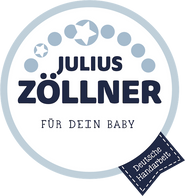Interview with Still-Expert Dagmar Heerten

Julius Zöllner: Hello Dagmar, we are very happy to have you on board with us on the topics of "breastfeeding" and "safe sleeping environments"! Tell us a little bit about yourself and your field of activity.
Dagmar Heerten: Thank you, dear Sabrina, for allowing me to tell you a little about the work of an IBCLC lactation consultant. For example, I took my IBCLC exam for the first time in 1999. We have to recertify every 5 years to guarantee that we are always up to date. I worked in a large maternity hospital, where I was on leave for 7 years as the hospital's breastfeeding officer, taking care of all the breastfeeding mothers and their babies throughout the hospital. I founded a breastfeeding group and led it for 14 years. As a representative of the clinic, I worked in the health department of the city of Gelsenkirchen. In 2010 we received the health prize (1st place) from NRW. I also chaired the BDL (Professional Association of German Lactation Consultants) for 8 years. In addition to outpatient advice on breastfeeding problems, I look after the breastfeeding lounge at Babywelt trade fairs in Germany and Austria. At the family education center in Wilhelmshaven I hold information evenings on the subject of breastfeeding and I am in charge of a breastfeeding group.
You are a breastfeeding consultant and look after breastfeeding mothers or women with breastfeeding problems. What can such problems look like and what can be done about them?
Most mothers come forward because they have sore nipples, their baby isn't gaining weight, they don't want to breastfeed with a nipple shield anymore and they don't dare try it without support.
Can every woman breastfeed?
There are few exceptions why a woman cannot or must not breastfeed. Sometimes there are diseases or medication that cannot be used to breastfeed. Unfortunately, many women stop at the first problem because they do not receive adequate support. Sometimes there is also a lack of family support.
What tools are there?
There are e.g. nipple shields, breast pumps - electric or hand pumps. Breast feeding sets, but which should be accompanied by qualified personnel in the application. Nursing pillows can be a good aid when breastfeeding, especially at the beginning. Since breastfeeding can take quite a long time in the first few weeks, it is important that the mother sits or lies down comfortably. The forearms rest on the nursing pillow, the child can easily be placed in a cradle or restraint position. Breastfeeding lying down at night with the nursing pillow on your back is more relaxed than without. Many women already use a breastfeeding pillow during pregnancy, as this allows them to lie down better in bed, with a breastfeeding pillow on their back or under their stomach. Nursing pillows should not be too small, 180-190 cm are ideal. It should not be too bulging so that it can adapt better to the body. It should be washable because babies spit up a lot at first. The filling should not crackle because the baby, when it is picked up, has just fallen asleep while breastfeeding, is often awakened by the crackling. Of course, it should not contain any harmful substances.
How long should a baby be breastfed? Is there a guideline here?
The WHO and BfR recommend: "Exclusive breastfeeding for 6 months and with suitable complementary food for as long as mother and child wish it". Worldwide weaning age is recommended at 2.5 years, which is rather rare in the industrialized countries.
In addition to your function as a lactation consultant, you are also a trained pediatric nurse and have accompanied many babies from birth. The biggest concern of new parents is often creating a safe sleeping environment for the newcomer. What are the most important requirements for you here?
The newborn should sleep in its own bed in the parents' bedroom, preferably right next to the parents' bed. Lying on your back in a suitable sleeping bag. A firm, air-permeable mattress is also important. The room temperature should be between 16°C and 18°C. No canopy and no nest in the bed, so that heat cannot build up.
What should be considered when using a sleeping bag?
The most important thing: the sleeping bag has to fit. Grow out and not grow in is the motto. The size of the neck and armholes is particularly important. If these are too big, the child threatens to slip into the sleeping bag. The material should not be too heavy and breathable. Inner sleeping bags are not absolutely necessary, you can dress the child in the sleeping bag depending on the weather. Less in summer (e.g. only a short-sleeved body) and in winter pajamas over the body.
How do you determine the correct size of a sleeping bag?
Height – head length +10cm. If the child lies stretched out in the sleeping bag, there should be at least 10 cm of air to the foot end of the sleeping bag. Sufficient freedom of movement, i.e. the sleeping bag should not be too tight, is just as important. Of course, it shouldn't be too wide either, so that the child doesn't get tangled up in its movements.
Many parents worry that their baby could freeze or overheat in their sleeping bag. How can you find out if the little one is comfortable?
Newborns usually have cold hands, which says nothing about their body temperature. It is best to feel the temperature on the child's neck. If the child feels pleasantly warm there, it is correct. Otherwise dress the child a little warmer. Don't put a blanket over your sleeping bag, rather put on warm socks and a long-sleeved bodysuit. Keep the room temperature below 20°C, even in summer.
Thank you for the interview! We wish you all the best and much success on your further path.
Thank you so much for letting me talk about two of my favorite topics.

